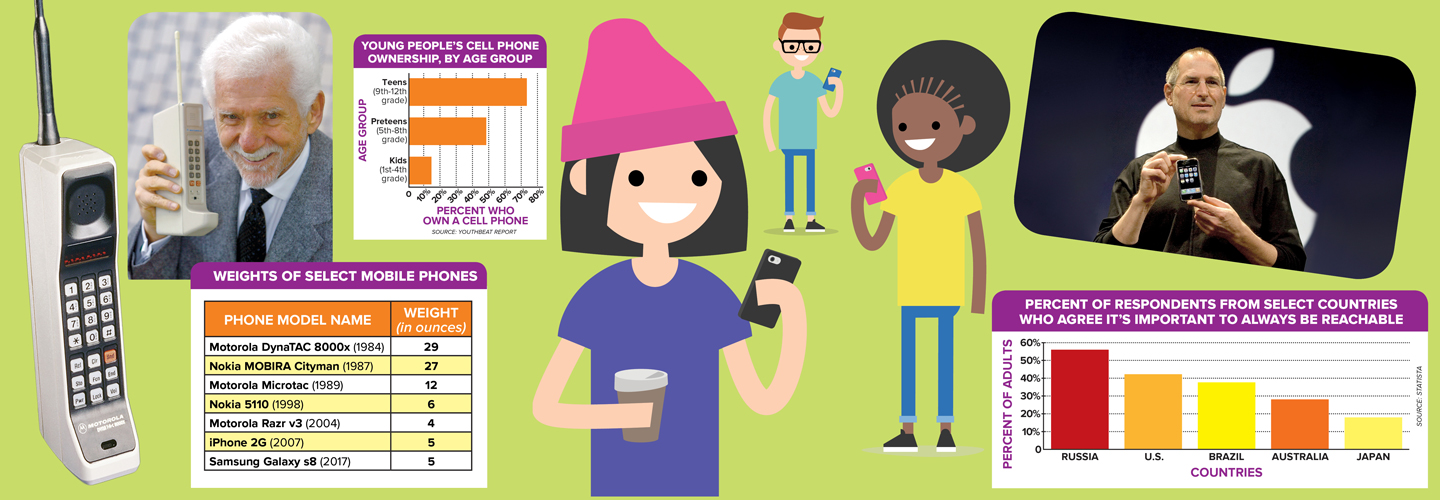We didn’t always have cell phones. But that changed in 1973. That year, engineer Martin Cooper invented the first truly mobile phone. To celebrate, he used a test model to call a rival engineer while walking down a New York City street.
Cooper’s phone went on sale in the U.S. in 1984. Called the Motorola DynaTAC 8000x, the phone measured more than a foot long. It weighed 1.8 pounds—more than the weight of 5 of the latest iPhones combined.
Early phones were a lot like landline phones. You could just talk. There was no texting, internet access, or games. The battery lasted only 30 minutes.
Over the years, more features became available. In 1993, you could text on some phones. In 1994, a Tetris-like game became the first to appear on a mobile phone. By 1999, you could use some phones to go online.
Tech companies started adding cameras to phones in 2002. This paved the way for apps like Instagram.
Today, there are more than 7 billion cell phones in use around the world.
We didn’t always have cell phones. But that changed in 1973. That year, engineer Martin Cooper invented the first truly mobile phone. He wanted to celebrate. He called a rival engineer with a test model while walking down a New York City street.
Cooper’s phone went on sale in the U.S. in 1984. It was called the Motorola DynaTAC 8000x. The phone measured more than a foot long. It weighed 1.8 pounds. That’s more than the weight of five of the latest iPhones combined.
Early phones were a lot like landline phones. You could just talk. There was no texting. There was no internet access or games. The battery lasted only 30 minutes.
Over the years, more features became available. In 1993, you could text on some phones. In 1994, a Tetris-like game became the first to appear on a mobile phone. By 1999, you could use some phones to go online.
Tech companies started adding cameras to phones in 2002. This paved the way for apps like Instagram.
Today, there are more than 7 billion cell phones in use around the world.

